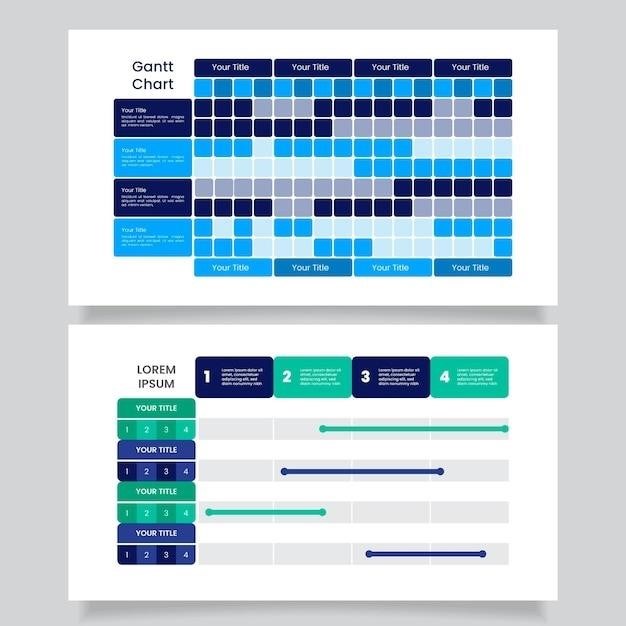C0 Sampling Plan Table⁚ A Comprehensive Guide
The C0 sampling plan table is a valuable tool used in quality control to assess the quality of a lot based on the number of defects found in a sample. This guide will provide a comprehensive overview of C0 sampling plans‚ exploring their key parameters‚ applications‚ advantages‚ limitations‚ and practical implementation. We will delve into the intricacies of the C0 sampling plan table‚ providing a clear understanding of its structure and how it can be effectively utilized. By understanding the principles behind C0 sampling plans‚ businesses can make informed decisions regarding quality control and ensure the production of high-quality products.
Introduction to C0 Sampling Plans
C0 sampling plans‚ also known as zero acceptance number sampling plans‚ are a specific type of acceptance sampling plan used in quality control processes; Unlike traditional acceptance sampling plans‚ which allow for a certain number of defective items within a sample‚ C0 plans adhere to a strict “zero tolerance” policy. This means that if even a single defect is found during the inspection of a sample‚ the entire lot is rejected. The C0 sampling plan is a powerful tool for ensuring high quality standards and minimizing the risk of defective products reaching the end consumer.
The concept of C0 sampling plans is rooted in the principle of minimizing the risk of accepting a lot with even a single defect. The rationale behind this approach is that even a small number of defective items can significantly impact product performance‚ reliability‚ and customer satisfaction. By adopting a zero acceptance number policy‚ organizations can effectively eliminate the risk of accepting batches that do not meet their stringent quality criteria.
The C0 sampling plan is particularly relevant in industries where product quality is paramount and even minor defects can have significant consequences. For example‚ in the medical device industry‚ C0 sampling plans are crucial for ensuring the safety and efficacy of medical devices. Similarly‚ in the aerospace industry‚ where safety is non-negotiable‚ C0 sampling plans play a vital role in maintaining the integrity of aircraft components.
In essence‚ C0 sampling plans represent a commitment to achieving the highest possible quality standards. By accepting only lots with zero defects‚ organizations can ensure that their products meet the expectations of their customers and maintain a reputation for excellence.
Understanding the C0 Sampling Plan Table
The C0 sampling plan table is a tabular representation of various sample sizes and corresponding lot sizes used in C0 sampling plans. It serves as a guide for determining the appropriate sample size for a given lot size based on the zero acceptance number criterion. The table is structured in a way that allows for easy identification of the sample size required for different lot sizes‚ ensuring that the inspection process effectively covers the entire lot.
Each row in the table represents a specific lot size‚ and each column corresponds to a different sample size. The intersection of a row and column indicates the recommended sample size for that particular lot size. For instance‚ if you have a lot size of 100‚ you would look for the row corresponding to 100 and find the recommended sample size based on the table’s structure. The C0 sampling plan table is designed to ensure that the sample size is large enough to provide a statistically reliable assessment of the lot’s quality while remaining practical and efficient.
The C0 sampling plan table is typically constructed based on specific quality levels (AQLs)‚ which represent the acceptable quality level that a lot should meet. The table typically includes different AQLs‚ allowing for the selection of a suitable sample size based on the desired level of quality assurance. By using the C0 sampling plan table‚ organizations can ensure that their inspection process is aligned with their quality standards and effectively minimizes the risk of accepting defective lots.
It’s important to note that the C0 sampling plan table is just a guide‚ and the actual sample size may need to be adjusted based on specific factors‚ such as the complexity of the product‚ the history of the supplier‚ and the severity of potential defects. However‚ the table provides a valuable starting point for determining the appropriate sample size and helps ensure that the inspection process is conducted efficiently and effectively.
Key Parameters of C0 Sampling Plans
C0 sampling plans are characterized by a few key parameters that define their application and effectiveness. Understanding these parameters is crucial for selecting and implementing the appropriate C0 sampling plan for a given situation.
The most important parameter is the acceptance number (c)‚ which is set to zero in C0 plans. This signifies that the lot is accepted if zero defects are found during the inspection‚ and rejected if even a single defect is detected.
Another critical parameter is the sample size (n). This represents the number of units randomly selected from the lot for inspection; The sample size is determined based on the lot size and the desired level of confidence in the inspection results.
The Acceptable Quality Level (AQL) plays a significant role in C0 sampling plans. AQL is the maximum acceptable percentage of defective units in the lot. This parameter influences the selection of the appropriate sample size‚ as higher AQLs typically require larger sample sizes to ensure the same level of confidence.
The Operating Characteristic (OC) curve provides a visual representation of the probability of accepting a lot with a specific percentage of defective units. This curve helps determine the effectiveness of the C0 sampling plan at different quality levels.
Understanding these key parameters is essential for implementing C0 sampling plans effectively. By carefully considering the lot size‚ AQL‚ and the desired level of confidence‚ organizations can choose the appropriate C0 sampling plan and ensure that their quality control process is robust and reliable.

Applications of C0 Sampling Plans
C0 sampling plans find wide application in various industries and scenarios where strict quality control is paramount. They are particularly well-suited for situations where even a single defect can have significant consequences‚ such as critical components in medical devices‚ aerospace manufacturing‚ and food production.
C0 sampling plans are frequently employed in industries where suppliers have established a strong track record of high-quality production. This approach is particularly effective when the risk of defects is extremely low‚ and the cost of inspecting a large sample is prohibitive.
Specific applications of C0 sampling plans include⁚
- Inspection of high-value components⁚ For critical parts in medical devices‚ aerospace components‚ or other high-value products‚ C0 sampling plans ensure stringent quality control‚ minimizing the risk of defects.
- Verification of critical processes⁚ When a process is crucial for product quality‚ C0 sampling plans provide a high level of assurance that the process is consistently meeting quality standards.
- Auditing supplier performance⁚ C0 sampling plans can be used to verify the quality of incoming materials or components from suppliers‚ providing a stringent evaluation of their performance.
- Quality control in critical industries⁚ Industries such as pharmaceuticals‚ food production‚ and electronics heavily rely on C0 sampling plans to ensure the safety and reliability of their products.
The versatility and effectiveness of C0 sampling plans make them a valuable tool for organizations seeking to maintain high quality standards and minimize the risk of defects in their products and processes.
Advantages of C0 Sampling Plans
C0 sampling plans offer several advantages that make them a compelling choice for quality control in specific situations. These advantages stem from the plan’s simplicity‚ effectiveness‚ and focus on minimizing the risk of accepting defective lots.
- Reduced Inspection Costs⁚ Compared to traditional acceptance sampling plans‚ C0 sampling plans often require significantly less inspection‚ leading to cost savings in terms of labor‚ time‚ and resources. This advantage is particularly valuable when dealing with large lot sizes or when inspection costs are high.
- Enhanced Quality Assurance⁚ C0 sampling plans provide a high level of assurance that the accepted lots meet stringent quality standards. The zero acceptance number effectively eliminates the risk of accepting lots with defects‚ ensuring that only high-quality products are released.
- Simplified Decision-Making⁚ The C0 sampling plan simplifies the decision-making process for acceptance or rejection. The outcome is clear-cut⁚ zero defects result in acceptance‚ and any defects lead to rejection. This straightforward approach reduces the complexity and potential for errors associated with more complex sampling plans.
- Increased Supplier Accountability⁚ C0 sampling plans incentivize suppliers to maintain a high level of quality control‚ as even a single defect can lead to lot rejection. This increased accountability can drive continuous improvement efforts and foster a culture of quality within the supplier network.
- Strong Customer Confidence⁚ By employing C0 sampling plans‚ businesses demonstrate a commitment to delivering high-quality products to their customers. This commitment builds trust and confidence in the brand‚ enhancing customer satisfaction and loyalty.
While C0 sampling plans offer significant advantages‚ it’s crucial to understand their limitations and ensure their suitability for the specific application.
Limitations of C0 Sampling Plans
While C0 sampling plans offer several advantages‚ it’s crucial to be aware of their limitations to ensure they are applied appropriately and effectively. These limitations stem from the plan’s strict acceptance criteria and the potential for false rejection.
- High Risk of Rejection⁚ Due to the zero acceptance number‚ even a single defect in the sample can lead to lot rejection. This can be problematic‚ especially when dealing with processes that naturally have some level of inherent variability or when the supplier’s quality level is consistently high.
- Inability to Tolerate Minor Defects⁚ C0 sampling plans do not allow for any tolerance for minor defects‚ which may not significantly impact product functionality or performance. This can lead to unnecessary rejection of lots that are otherwise acceptable.
- Limited Applicability to Certain Products⁚ C0 sampling plans are not suitable for all types of products or production processes. For example‚ they may not be appropriate for complex products with multiple components or processes where defects are difficult to detect or are considered minor.
- Potential for False Rejection⁚ The strict acceptance criteria can lead to false rejections‚ particularly when dealing with small sample sizes or when the inspection process itself is prone to errors. This can result in unnecessary delays‚ increased costs‚ and potential customer dissatisfaction.
- Inability to Assess Acceptable Quality Levels (AQLs)⁚ C0 sampling plans do not provide a mechanism to assess acceptable quality levels (AQLs)‚ which are the maximum allowable defect rates. This limitation makes it difficult to determine whether the rejected lots are truly unacceptable or simply fall slightly below the acceptable threshold.
Understanding these limitations is essential for making informed decisions about whether C0 sampling plans are appropriate for a specific application. It’s crucial to carefully consider the nature of the product‚ the production process‚ and the desired level of quality control before implementing C0 sampling plans.
Choosing the Right C0 Sampling Plan
Selecting the appropriate C0 sampling plan is crucial for effective quality control. The choice depends on several factors‚ including the lot size‚ the desired level of quality assurance‚ and the acceptable risk of accepting defective products. The C0 sampling plan table provides a range of options based on these parameters. To determine the best fit‚ consider the following steps⁚
- Define the Lot Size⁚ The lot size represents the total number of units in the batch being inspected. The C0 sampling plan table typically categorizes lot sizes into ranges. Identify the range that corresponds to the lot size being examined.
- Establish the Acceptable Quality Level (AQL)⁚ The AQL represents the maximum allowable defect rate that is considered acceptable. AQLs vary depending on the specific product‚ industry standards‚ and customer requirements. Determine the appropriate AQL based on these factors.
- Assess the Risk Tolerance⁚ Consider the acceptable risk of accepting a lot containing defects and the risk of rejecting a lot that meets the quality standards. The C0 sampling plan table provides sample sizes that correspond to different risk levels.
- Identify the Corresponding Sample Size⁚ Once the lot size‚ AQL‚ and risk tolerance are established‚ locate the corresponding sample size in the C0 sampling plan table. The table will indicate the number of units to be inspected from the lot.
- Evaluate the Inspection Process⁚ Ensure that the inspection process is robust and reliable. A well-defined and consistently applied inspection process is essential to ensure accurate identification of defects.
By carefully considering these factors and utilizing the C0 sampling plan table‚ you can choose the most appropriate plan for your specific needs. The selected plan should provide a balance between ensuring product quality and minimizing the risk of unnecessary rejections.
Implementing C0 Sampling Plans in Practice
Implementing C0 sampling plans in practice involves a systematic approach to ensure effective quality control. This involves careful planning‚ execution‚ and documentation of the sampling process. Here are the key steps involved in implementing C0 sampling plans⁚
- Define the Inspection Criteria⁚ Clearly define the specific criteria for identifying defects. This could include visual inspection‚ dimensional measurements‚ functional tests‚ or other relevant quality characteristics.
- Random Sample Selection⁚ Randomly select the sample from the lot to ensure representativeness. Use a random number generator or other suitable method to avoid bias in sample selection.
- Conduct the Inspection⁚ Thoroughly inspect the selected sample according to the defined criteria. Document any defects found‚ including their nature‚ location‚ and severity.
- Decision Making⁚ Based on the inspection results‚ decide whether to accept or reject the lot. If zero defects are found‚ accept the lot. If one or more defects are found‚ reject the lot.
- Record and Document⁚ Maintain detailed records of the sampling process‚ including the lot size‚ sample size‚ inspection date‚ inspector’s name‚ and the results. These records provide valuable data for tracking quality trends and identifying potential areas for improvement.
- Corrective Action⁚ If a lot is rejected‚ implement corrective actions to address the underlying cause of the defects. This could involve investigating the production process‚ implementing process improvements‚ or conducting additional training.
By following these steps‚ you can effectively implement C0 sampling plans and ensure that the quality of your products meets the desired standards. Regularly review and evaluate the effectiveness of the sampling plan to ensure its continued suitability for your specific needs.


